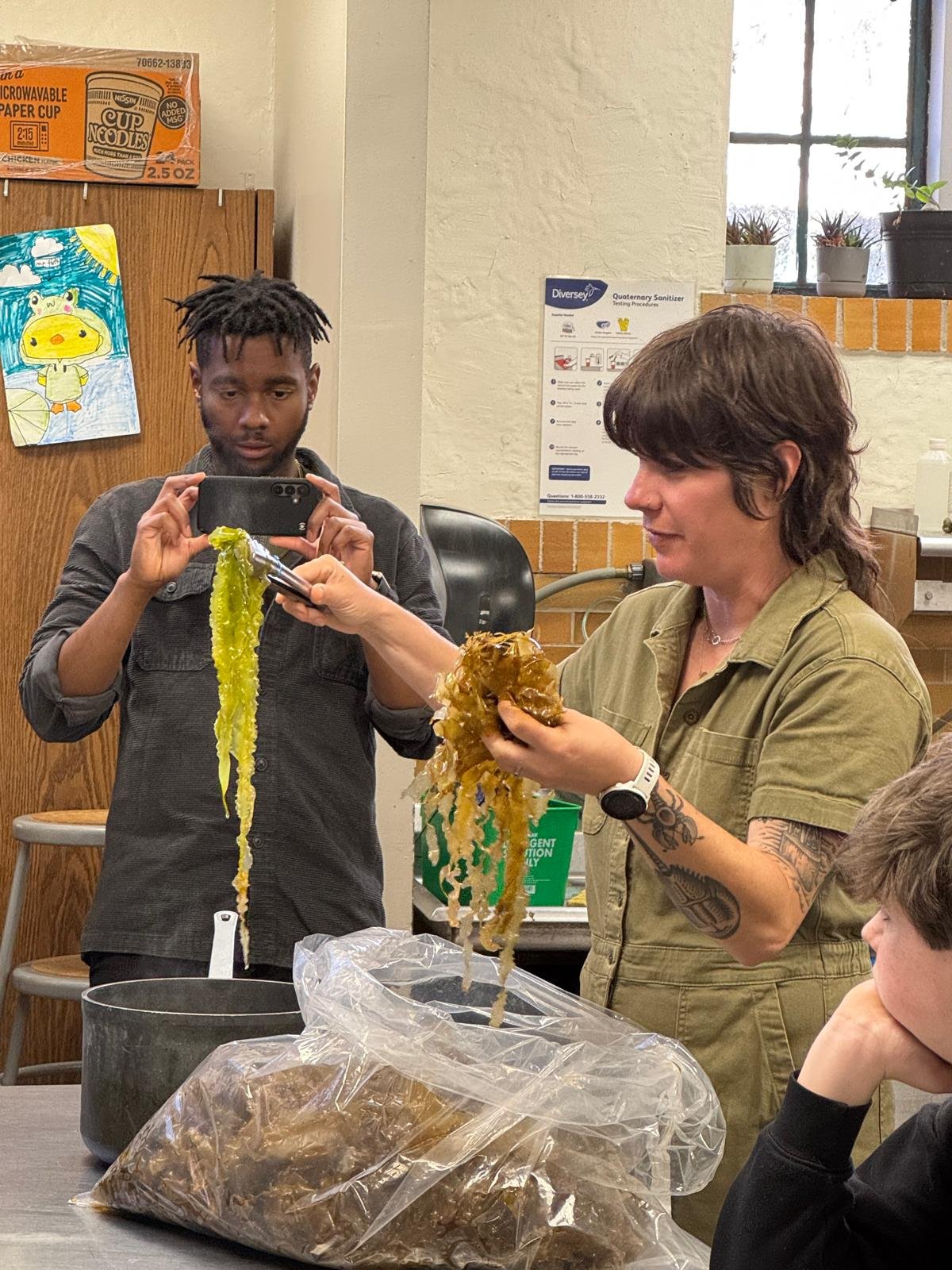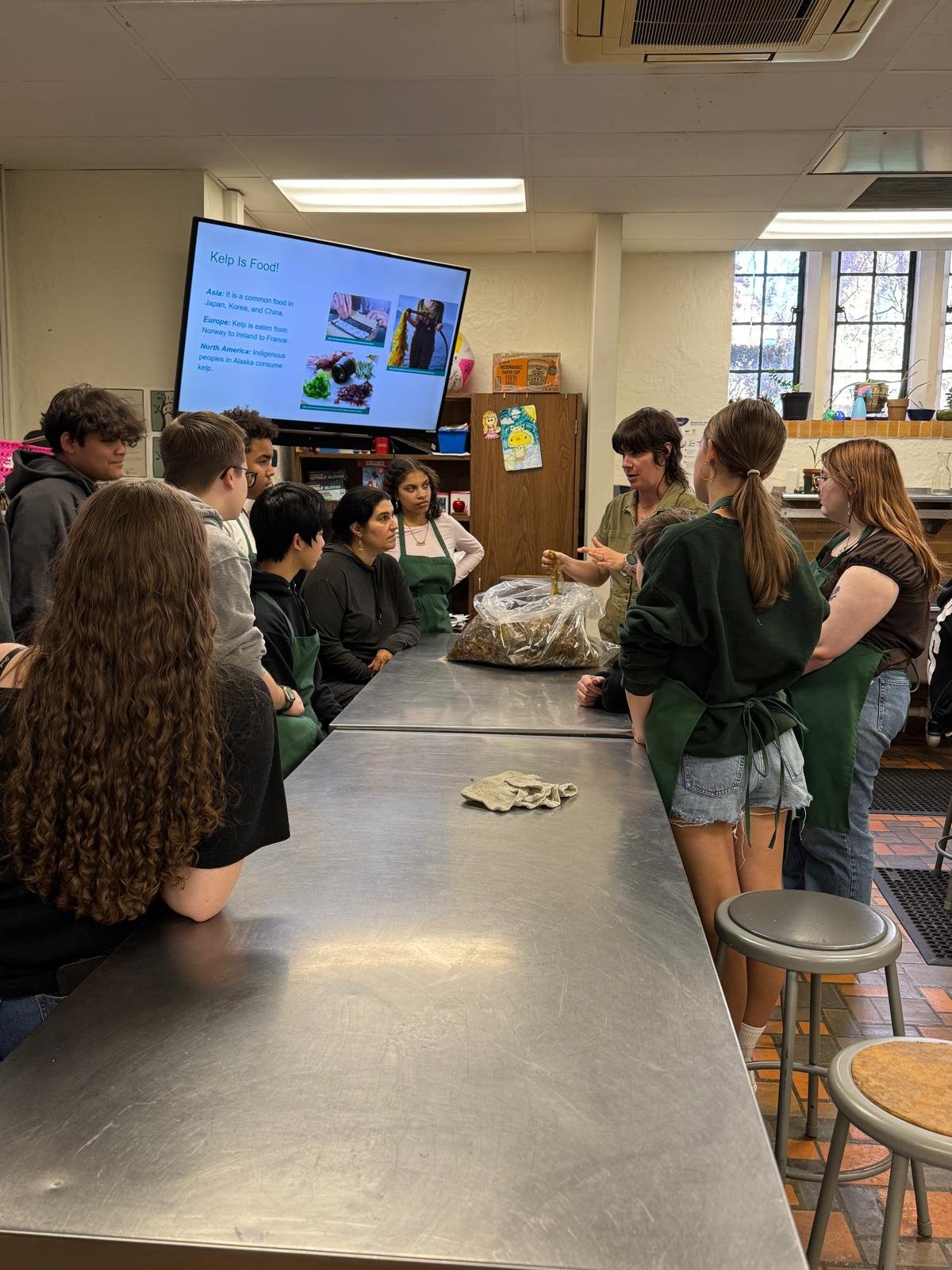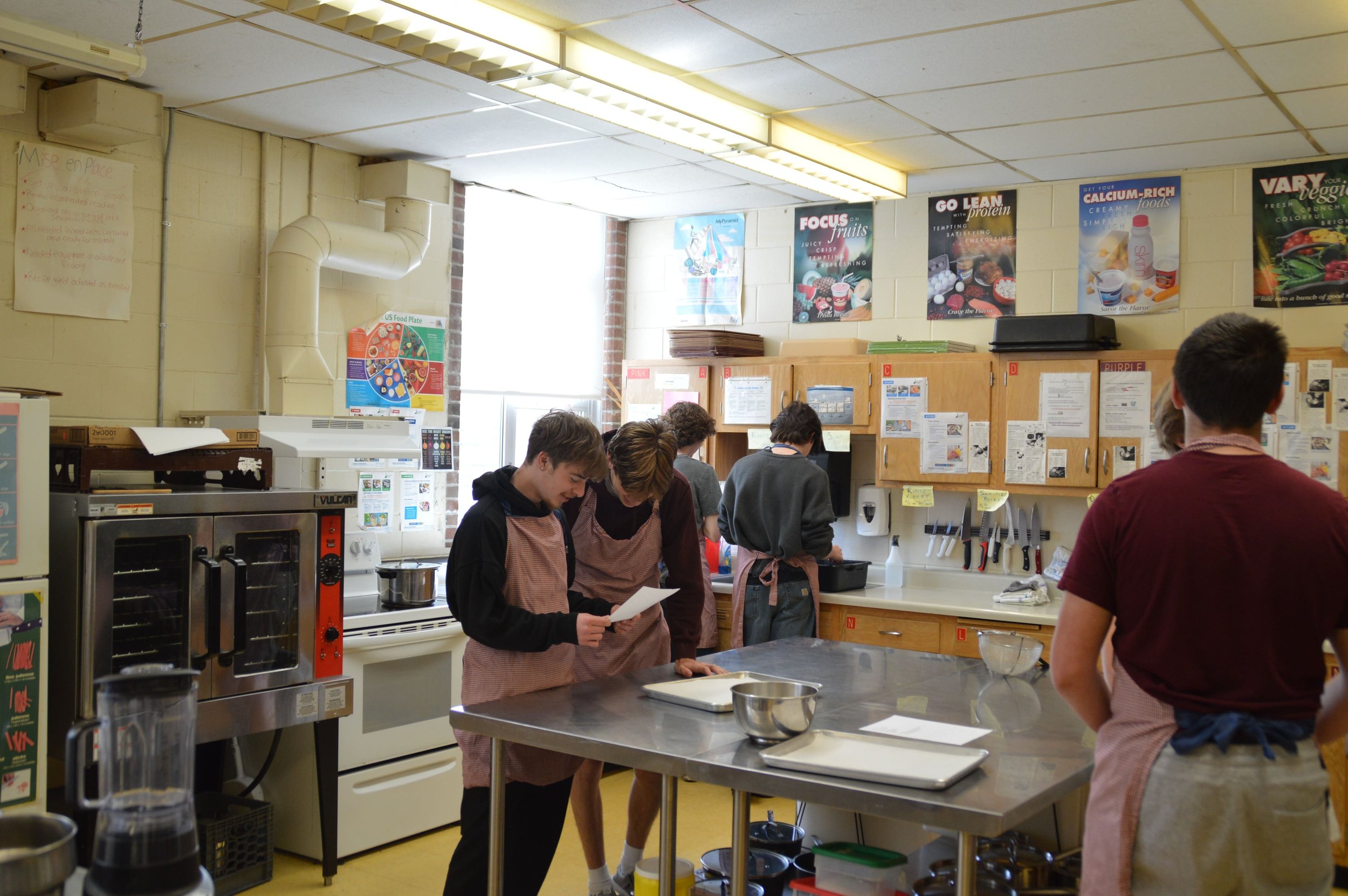Help Bring Seaweed Education to Classrooms
This spring in Stonington, Connecticut, high school students spent an afternoon cooking with kelp—mixing it into cucumber seaweed salad, stirring kelp cubes into soft gnocchi, and dusting kelp furikake over crisp Caesar salad.
For a lot of young people across the U.S., kelp isn’t even on their radar. If they’ve heard of it at all, it’s usually as the slimy stuff that washes up on the beach. But once students actually get their hands on it—touching it, smelling it, tasting it—they usually go, “Oh…this is not what I thought!”
The “weird ocean plant” becomes real, and they start to understand how essential this blue food is to marine ecosystems around the world and the climate as a whole.
They also discover how it can immediately support their bodies, mind, and mood. Naturally rich in potassium, iron, calcium, fiber, iodine, and essential vitamins, seaweed provides vital nutrients that kids and teens often don’t get enough of. These support healthy energy levels, strong bones, immune function, digestion, and even brain development.
When students learn this in a hands-on way while cooking, it clicks in a way a textbook never could.
This year, our partnership with Yellow Farmhouse Education Center brought fresh sugar kelp into seven schools across Connecticut. Nearly 200 students cooked with it, learned from local kelp farmers, and explored sustainable aquaculture through Hope in the Water’s PBS Learning Media toolkits.
They tasted new flavors, asked big questions, and saw firsthand how their food choices connect to ocean health.
And now educators across the country are asking for support to bring the same experience into their own classrooms.
That’s why, this Giving Tuesday, Fed by Blue is launching microgrants for teachers: small but impactful grants that help educators bring seaweed and other sustainable blue foods into their lesson plans through cooking, curriculum, hands-on activities, and storytelling.
Your donation helps make that possible:
$25 gives a teacher digital lesson plans and seaweed education materials.
$50 sends tasting samples so students can try seaweed for the very first time.
$100 covers ingredients for a full-class kelp cooking activity.
$250 provides a “Seaweed Starter Kit” for a culinary teacher.
$500 brings a kelp farmer, chef, or marine expert into the classroom for a visit.
$1,000 supports a school in running a “seaweed week” style program.
$2,500 funds a full teacher microgrant for a year of seaweed-centered education where they can grow it in the classroom and more!
For many students, especially those in landlocked areas, this is the first time the ocean feels connected to their own lives. It can also be the first time they see themselves as part of a future where food supports both people and the planet.
We invite you to join us to bring these epiphanies to more students and inspire a new generation of ocean stewards!









